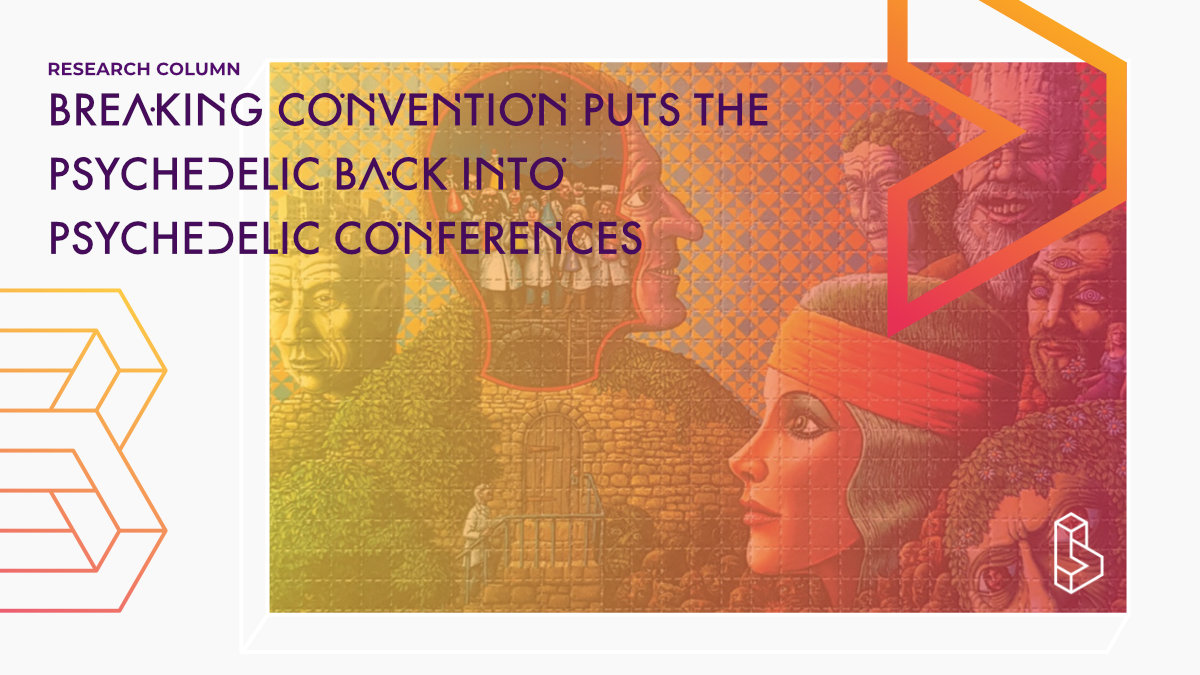A kaleidoscopic flock of kindred spirits meanders gracefully toward me. The individual leading this procession is adorned in a flannel jacket, its vibrant hues a vivid representation of every shade the rainbow can conceive. Close behind, another curious soul has chosen to don an enchanting mushroom hat, an emblem of the magical realms they seek to explore. The air, thick with the pungent, unmistakable aroma of cannabis, seems to envelop us in a warm, intoxicating embrace. This auspicious day, the twentieth of April (4/20), marks the beginning of the sixth edition of the eclectic gathering known as Breaking Convention. Together, this spirited assembly of Breakeros embarks on a journey toward the opening ceremony, a doorway to a realm of unbounded exploration and enlightenment.
Once the congregation of 1100 journeyers has taken their seats, the four directors of Breaking Convention (BC) give us the download on the history and motivation behind the conference that harmonizes the science and culture of psychedelics. Alexander Beiner, who will later speak on the intersection of DMT and AI, imparts a gentle warning that, as the mainstreaming of these entheogenic substances courses through society with unbridled force, it is of paramount importance to remain mindful of how this metamorphosis unfolds.
In the Hofmann Hall, the BC crew delivers their presentation poised before an ethereal wall of mushrooms encircled by a verdant grove of a dozen saplings. With a glint of mischief in his eyes, satirist Dennis Walker later jests that he has consumed all the psilocybin-laden fungi.
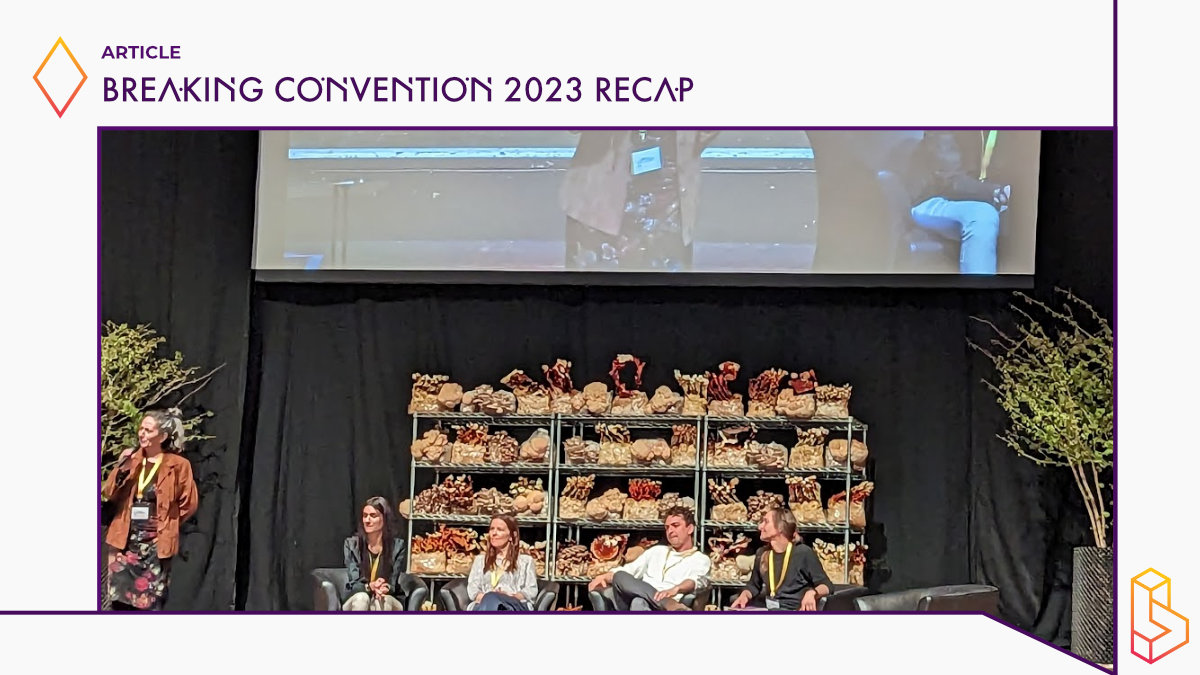
Returning to the present moment, Hattie Wells extols the virtues of indigenous wisdom and implores Western science to embrace the invaluable knowledge accrued over centuries. Amidst the mycelial network that weaves together the very essence of BC, a clarion call for nuance reverberates, casting a stark contrast to the hypeful and sensationalized conferences that have proliferated across the US in recent years.
The ever-enigmatic Jules Vayne, a mystic occultist, author, and ecstatic dancer, ushers us on a poetic tour through the pastoral lands “of sheep and cattle farming”. He dutifully reminds the audience of the region’s hidden treasures—liberty caps-grow but mere miles from where the conference transpires. Jules feels “fortunate to be in this place here, right now,” his sentiments resonating with the timeless wisdom of Ram Dass, a voice from the earlier psychedelic epoch. As the opening ceremony concludes, a grounding ritual unfurls, a meditation taking everyone to the core of the earth and outer regions of space. All gathered hold hands, signalling – for those oblivious to this point – that this is no conference for suits.
The Press Conference
A mere 24 hours hence, I find myself spirited away from the collective consciousness, transported to a gathering where the vanguards of the psychedelic renaissance share the latest endeavours their teams pursue. The flock of attentive journalists, eagerly awaiting revelations from the oracles, convenes within a tiny conference chamber, serenaded by an actual flock of seagulls gaggling above our heads. An hour later, the avian symphony shall be eclipsed by the impassioned discourse unfolding among the luminaries—renowned mycologist Paul Stamets, esteemed academic researcher David Erritzoe, and the psychedelic godmother herself, Amanda Feilding.
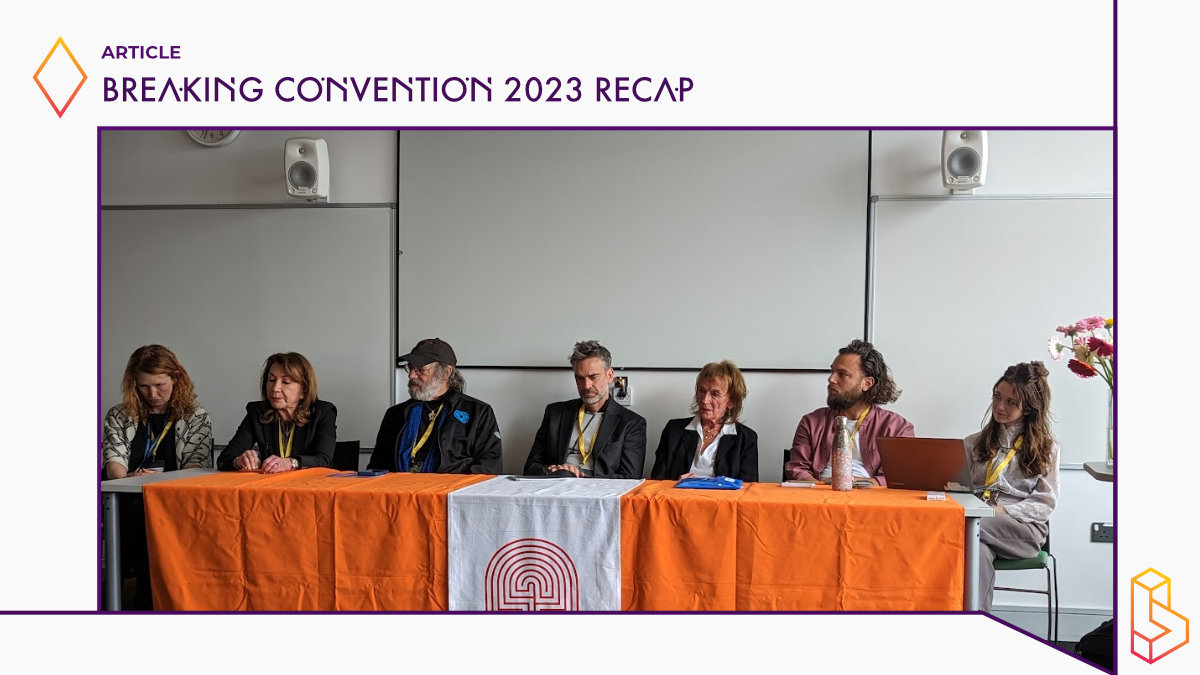
First to grace the stage, Celia Morgan, Professor of Psychopharmacology at the University of Exeter, highlights the launch of a graduate program in psychedelics—a world-first, she claims. However, some US institutions might beg to differ. A grove of researchers from the hallowed halls of Imperial College London has ventured forth to this rural haven. Chris Timmermann combines both aspects of academia in his highlights. He delves into the effects of prolonged DMT infusion on the human psyche (rest assured, they emerged unscathed) and explores the transformative impact of a psychedelic experience on an individual’s worldview (lest we all become the merry hippies I initially encountered upon setting foot on the university grounds).
Psychedelic researchers often find themselves drawn to this enigmatic field, captivated by personal encounters with these compounds’ healing powers; those who remain untouched by such experiences are unlikely to grace the halls of Breaking Convention. The pursuit of knowledge in the realm of psychedelics is an uphill battle fraught with adversity. While progress has been made in years past, stringent drug laws in the UK and beyond render the journey arduous, entailing police escorts, secure safes, and a litany of bureaucratic absurdities—all for molecules that thrive in the picturesque countryside of Devon, the very county in which we now convene.
The zeal for the curative potential of psychedelics resonates profoundly in Deborah Mash, a venerated Professor of Neurology and Molecular and Cellular Pharmacology and the founder of DemeRx. Her exploration of ibogaine’s anti-addictive properties is not motivated by the allure of the substance’s journey (which, in truth, is seldom enjoyable and rarely sought for recreation); instead, her mission is rooted in a deeper purpose. She wages a battle against the insidious influence of another drug—fentanyl. In her impassioned words, “Fentanyl is like a chemical weapon attack on our country.” Determined and resolute, she relentlessly seeks the antidote.
As our eclectic assembly of journalists—hailing from mainstream publications such as the BBC and Evening Standard, as well as psychedelic platforms like this very one—prepare to take their leave, a mycological entrepreneur and lifelong champion of this otherworldly realm of life unveils a written list of concerns that weigh heavily upon his heart. He asserts that microdosing has been unfairly maligned within the halls of academia. Rather than utilizing the whole mushroom, in which the so-called entourage effects are argued to yield positive outcomes, 70% of research studies focus solely on psilocybin, the potent molecule at the core of these magical fungi.
Stamets raises a compelling point when he highlights the distinct contrast between the swift onset and abrupt return to terra firma experienced with psilocybin pills or injections, as opposed to the more gradual and harmonious effects of whole mushrooms. Nevertheless, he swiftly pivots to cite survey studies and a particular microdosing investigation that I have previously criticized for sensationalizing mere correlations, which all too frequently become conflated with causation as their tales are retold in the popular press.
Stamets and Erritzoe find themselves entwined in a spirited debate, but a sense of mutual respect pervades. Beneath the surface lies a clash of two worldviews. The scientific paradigm seeks to compartmentalize the complexities of existence, devising classifications for mental afflictions that may be perceived as gradients on several spectra. In the words of Paul, “Most of us are healthy on the spectrum.”
The press conference spotlighted researchers, yet BC encompasses far more, as evidenced by the considerable presence of free-spirited souls. The dedicated organizers in attendance, Alexander Beiner and Rosalind Stone gently guide us back towards the communal tapestry of BC’s collective consciousness. Science does not exist in isolation from culture, and the noble quest for truth unfurls within a rich, interwoven tableau of scientific and societal domains. Rosalind, speaking with the fervour of an organizer poised to surrender to a deep slumber once the final attendee departs the campus grounds, reminds us that we must not extol the virtues of psychedelic science while neglecting those imprisoned for the very same molecules’ production. Breaking Convention exists to unite these various threads, to weave them into the fabric of each participant, and to cultivate a synergistic harmony that renders the whole far greater than the sum of its parts.
Joining via Video, the LSD Producer Turned VC Advisor
Back on stage, addressing the assembled audience via video link is the white-haired, once-accused mass producer of LSD turned venture capital advisor, the formerly incarcerated William Leonard Pickard. He dons a black suit adorned with the same vibrant spectrum of colours I encountered earlier. Behind him stands a towering collection of books, not meticulously arranged but exuding a joyous disarray.
Pickard reminisces about when he first met Albert Hofmann, the serendipitous discoverer of LSD, at a conference in Heidelberg, Germany. After their initial encounter during the day, the two men crossed paths once more at the witching hour, with Hofmann still clad in his suit yet now surrounded by a motley crew of free spirits sporting mohawks, hanging on his every word.
Much like Mash, Pickard shares a connection to the actual public enemy number one: fentanyl. His early work, unrelated to LSD production, forewarned of the imminent threat that this potent molecule posed to the health of the American populace. Decades later, he has been granted a compassionate release, narrowly evading a terminal fate behind bars following a double life sentence.
This elder of the psychedelic community emerges from his involuntary chrysalis, caught between the extremes of heaven and hell. He bears witness to a psychedelic renaissance beyond his wildest dreams, where scientific progress and decriminalization advance more rapidly than ever before. Yet simultaneously, he confronts the horrifying reality of the opioid epidemic he once prophesied. Having spent decades devoid of the simple joys of playing children, barking dogs, or blossoming flowers, Pickard implores the audience to treasure each moment. And through his advisory role at JLS Fund, he aspires to leave a positive imprint, to see Hofmann’s problem child growing up in the twilight of his life.
Visiting the psychedelic ‘farmers’ market
Amidst the enlightening talks, the psychedelic spirit thrives and flourishes. Stalls display a cornucopia of offerings, from mushroom products and DMT-inspired paintings to eco-friendly bumper stickers. A host of NGOs jostle for attention, catering to traumatized police officers, psycurious students, and every imaginable demographic eager to immerse themselves in the psychedelic realm. Within the conference’s various workshop spaces, one can partake in a cuddle workshop, delve into virtual reality explorations of psychedelics, or engage in a family constellation therapy session.
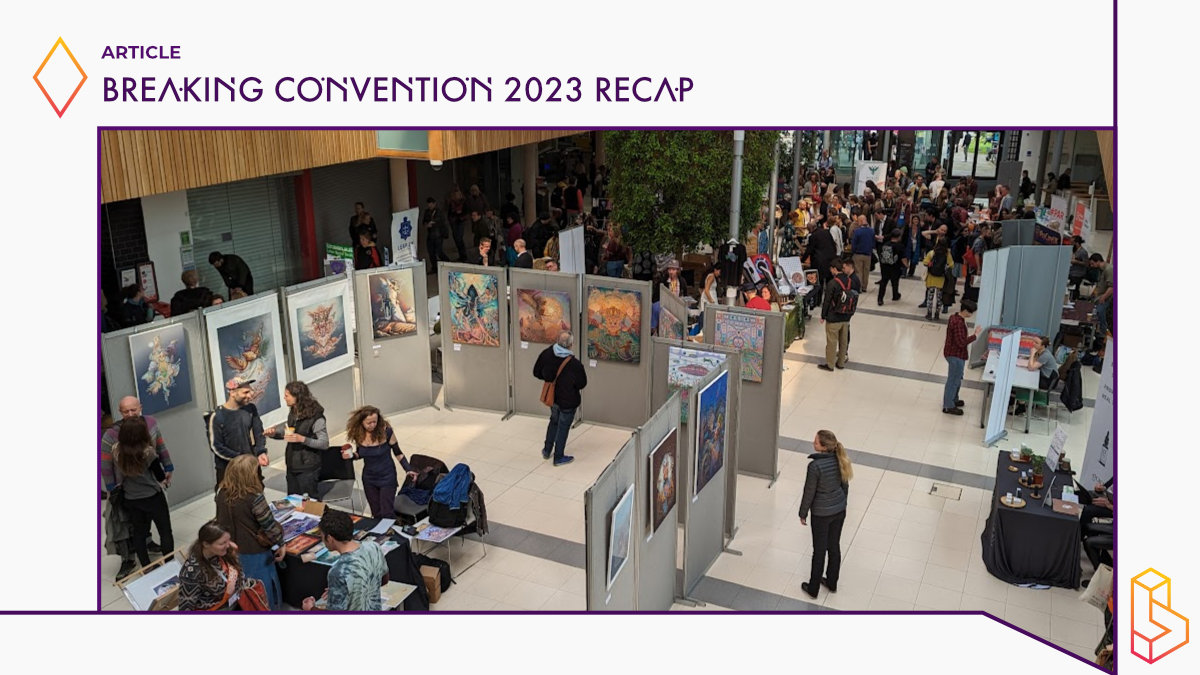
Wandering through the bustling psychedelic bazaar, I encounter a vibrant array of psychedelic devotees. A VR headset is placed on my head, and I am momentarily whisked away to an alternate realm. No longer in Exeter, I get instructions from a disembodied head on moving shifting orbs from one point to another. The game’s (Squingle) creator, reveals that the level design was conceived during their team’s own psychedelic journeys. A portion of the funding for this game hails from Meta (formerly Facebook), serving as a reminder that even amidst such ethereal experiences, commerce must still persist. Yet, save for a solitary venture capitalist, corporate influences remain refreshingly absent from BC.
I contemplate purchasing a carbon-neutral decal for the friend who ferried me from London to Exeter, but ultimately opt to abstain from commercial transactions—until we find ourselves buying drinks at the after-party. Navigating through a sea of tender embraces, nurturing mothers cradling infants, and visionary artists adorned with intricate tattoos from head to toe, I sense the impending arrival of the conference’s final afternoon of captivating discourse. Fear not, for even if the upcoming paragraphs unsettle you, rest assured that as the conference draws to a close, not a single soul will remain untouched by the intoxicating energy of the multi-faceted afterparty.
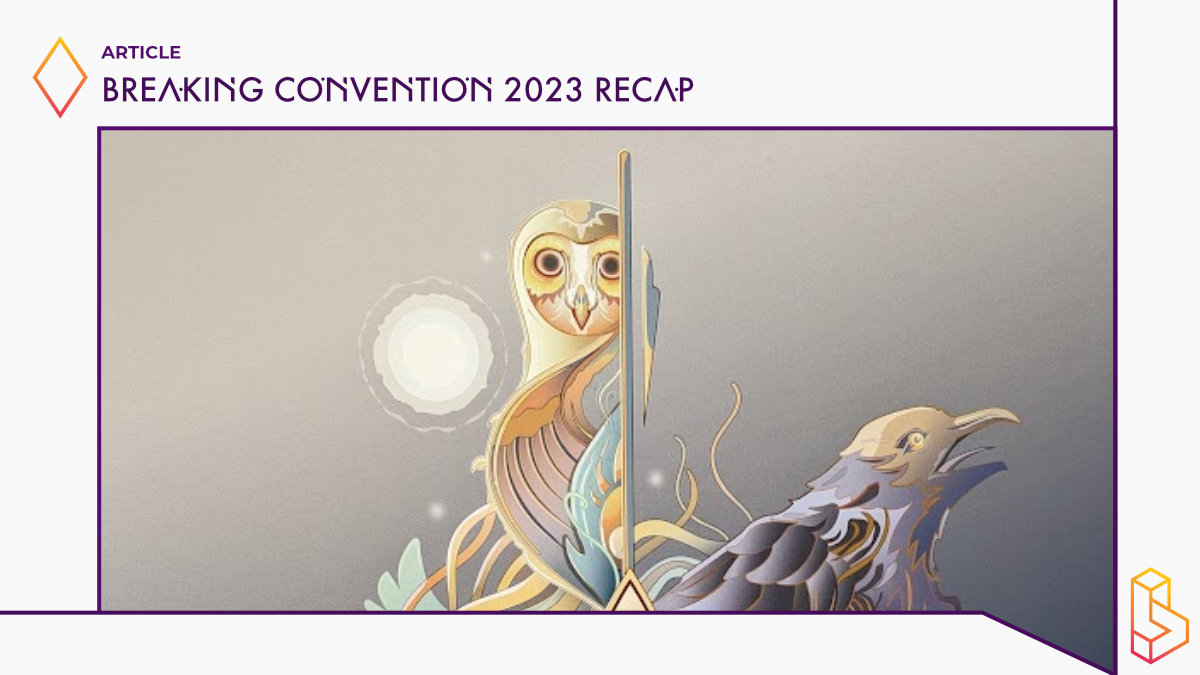
Hold Your Horses, Critical Perspectives on Implementation
This psychedelic renaissance, though enchanting, is not all shimmer and rainbows. Nearly every speaker acknowledges the challenging path that lies ahead. Daan Keiman, formerly the Director of Program and Product Development and facilitator at the now-defunct Synthesis, cautions against the surge of less qualified guides and coaches emerging from the numerous online courses that have sprouted like mushrooms in recent years.
More broadly, he warns of the fledgling market’s attempts to assist those who seek solace in the psychedelic realm. Yet, with proper guidance, we can avoid finding ourselves as disoriented as Alice in Wonderland. Keiman makes the analogy to undergoing a wisdom tooth extraction where we know what to anticipate; our colleagues understand how to express empathy upon our return to work, and we are well-shielded from malpractice. According to him, these crucial elements, and many others, are conspicuously absent in the burgeoning psychedelic landscape.
He and I briefly touch base and he impresses to me the following: “To effectively alleviate suffering and offer adequate psychedelic care, we need to consider what is required to achieve this aim. It is important to acknowledge that psychedelic use can result in harm, even when done correctly, as demonstrated by the work of David Luke and the Challenging Experiences project by Jules Evans. Additionally, much of the harm that arises from psychedelic use is due to inadequate implementation and incompetent guides.
Therefore, it is crucial that we develop an ecosystem that supports safe and effective psychedelic care. This entails building a framework that provides comprehensive training for therapists, researchers, and other professionals involved in the psychedelic field. And to discern online education from actual training. It also requires creating regulatory structures that prioritize patient safety and ethical considerations.
Moreover, we must foster an environment that supports ongoing research and development of psychedelic-assisted therapies and non-clinical forms of psychedelic care. This includes addressing the legal and systemic barriers that hinder access to psychedelic medicine and investing in research that can provide insight into the mechanisms of action and potential benefits of these substances.
Ultimately, the goal is to create a healthy ecosystem that can provide individuals with access to safer, more effective, and more culturally appropriate psychedelic care. This requires a collaborative effort from various stakeholders, including policymakers, researchers, healthcare professionals, and especially community representatives and advocates. By working together towards this common goal, we can increase the potential benefits of psychedelic medicine while minimizing the risks.”
This grand vision, perhaps bordering on utopian, is one that many at BC ardently pursue. Daniel Ingram, a devoted meditator, former ER physician, and convincingly enlightened individual, approaches this issue from the perspective of the medical establishment. In his rapid-fire talk, an attempt to condense an hour’s content into a mere 20 minutes, he outlines the steps necessary before physicians and psychiatrists can become competent allies for those navigating psychedelic experiences, or what he broadly terms “emergent phenomena”.
Ingram’s perspective is not merely that of an outsider casting judgment, an Arhant gazing back upon the realm of mere mortals. Instead, he envisions raising over $1.5 billion in funding to bridge these gaps. The Emergent Phenomenology Research Consortium (EPRC), a name scarcely recognized in the broader psychedelic sphere – so obscure that even I, having catalogued over 3,000 stakeholders, was unaware of them – harbours ambitions that, if realized, would outshine the efforts of MAPS‘ Rick Doblin by more than a factor of ten.
Speaking of Doblin, the warmhearted MDMA advocate, Founder, and President of MAPS, concludes the conference with a speech outlining the developments MAPS has undergone since MDMA’s prohibition. No new information was offered for seasoned psychonauts, yet, unsurprisingly, he spent an extra half hour passionately discussing MAPS’ plans.
Though Doblin envisions a world of “net zero trauma” by 2070, he’s confronted with formidable challenges. Funding for non-profits in this realm has waned, and mentioning administering MDMA to one’s dogs hardly helps. An economic analysis of potential costs for MDMA-assisted therapy, presented earlier that day by Elliot Marseille, startled some attendees, including seasoned researchers. If these far-from-definitive numbers are applied, MDMA will account for over half of the treatment costs, exceeding $6,000. The infrastructure Ingram desires, including insurance reimbursement, is far from guaranteed when the drug, obtainable for $10 on the street, is marked up so drastically.
Nevertheless, this didn’t deter Doblin from radiating his ever-present optimism. One can’t fault him, for without it, others would have abandoned hope 5, 10, or even 20 years ago. As confidently as he asserts that his following ten slides will take “just one more minute,” Doblin will continue battling for a future where psychedelic-assisted therapy is a reality.
The Final Hours of Breaking Convention 2023
In the present moment, two tasks remained: the closing ceremony and the afterparty. John Constable concludes, Breaking Convention style, serendipitously on Earth Day, with a communal ritual. From the description: “To celebrate the Spirit in the Flesh, the Sacred in the Profane, Eternity in Time.” Guided by a feather and robed in mystery, Constable invokes the four elements. Orgasmic cries resound as the fire element is cast, though only a select few join the ecstatic Constable.
In a way, the gathered Breakeros mirror the broader festivities unfurling throughout Exeter that day. Morris dancers fill the city, from the Cathedral’s grounds to the shopping street corners. It was as if the psychedelic spirit dwelling in Devon’s hills had melted with the conference. Though, for this — thus far — sober columnist, such a notion might be stretching reality just a tad too far.
The stampede migrates to the university bar, boasting two distinct dance areas. Bedecked with inflatable mushrooms, disco balls, and LCD screens showcasing psychedelic patterns, the party roars to life. On the dancefloor, esteemed researchers transformed into whirling bodies. The psychedelic curious visitors escalate their microdoses to macrodoses and dance into the night. Bosses shift into colleagues, colleagues metamorphose into friends, friends into humans, until the entire assembly stands with hands raised, swaying to the enchanting psychedelic rhythms. Just hours earlier, Constable had asked everyone to lift their hands and “spread the mycelial spores”; it seems here everyone has heeded the call.
As dawn breaks the next day, it’s time to return to reality—a reality with steeper hills to scale than the ascent to the university grounds. But in this reality, all Breakeros’ noses point in the same direction, even if occasionally they collide. While living through history, one can’t say where we stand, but it appears we are gradually awakening from the dark night of the soul.
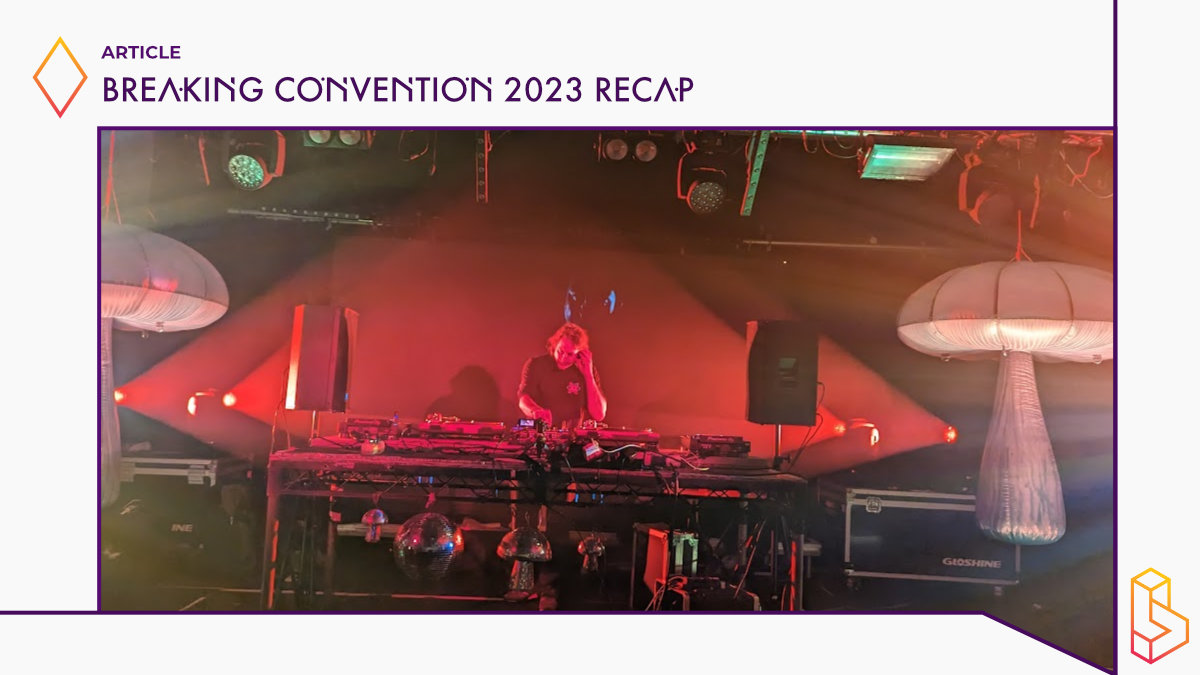
Become a psychedelic insider
Get a Pro Membership to enjoy these benefits & support Blossom📈 full reports on Topics & Compounds
🧵 full summary reviews of research papers
🚀 full access to new articles
See Memberships

